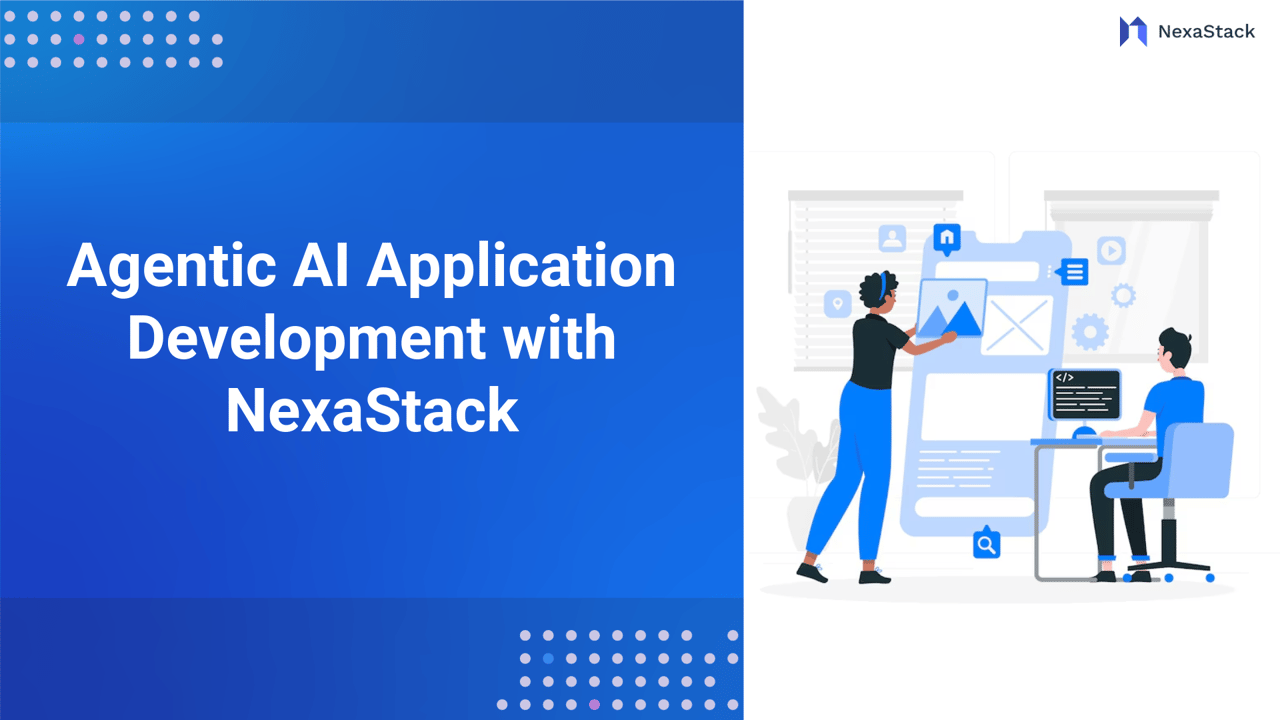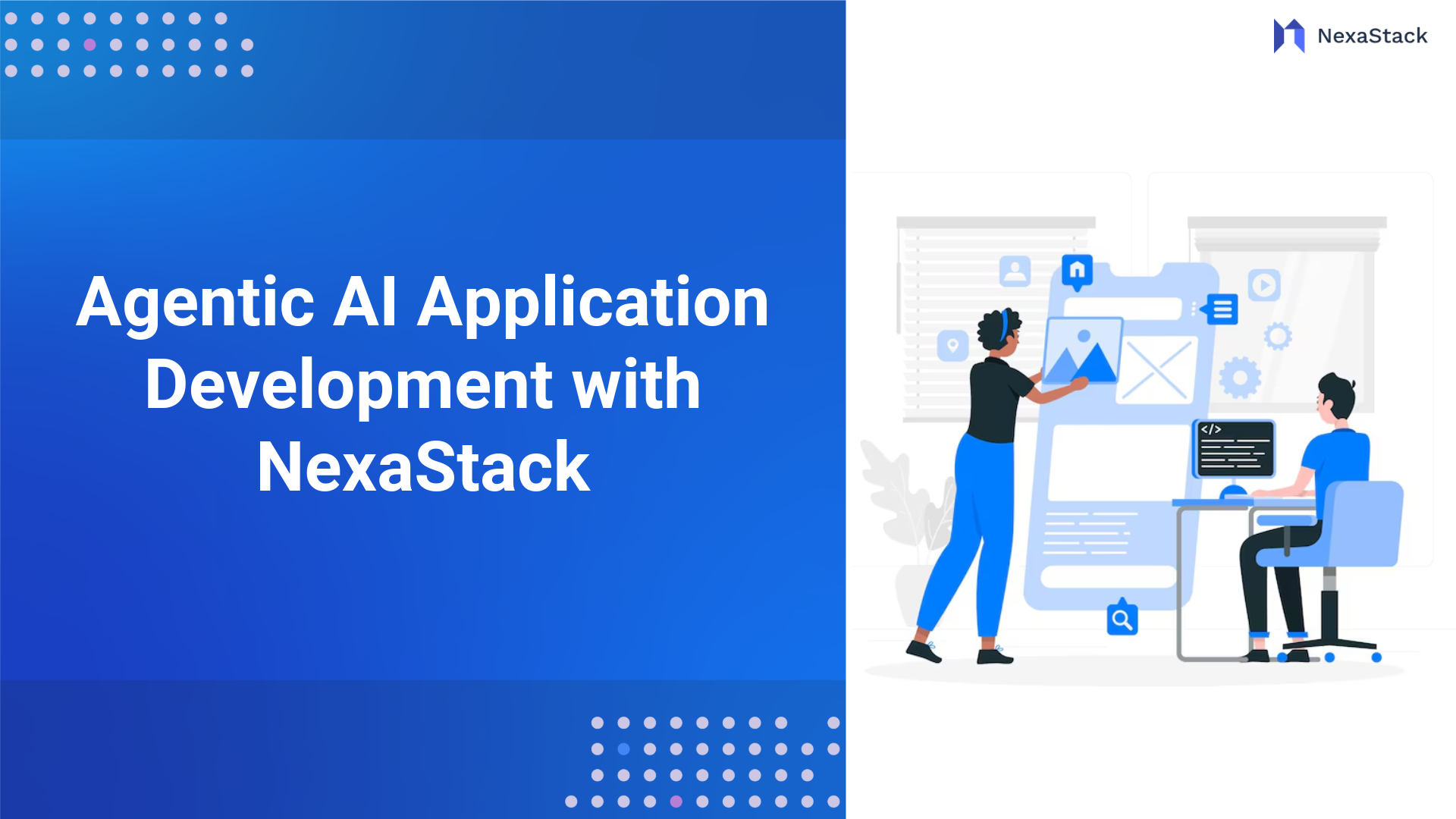Key Insights
NexaStack accelerates AI application development by offering a scalable platform that streamlines model deployment and integrates seamlessly with cloud and data pipelines. Its pre-built tools reduce customization, enabling faster time-to-market and improved performance, making it easier for teams to focus on innovation.

How NexaStack Optimizes the AI Development Lifecycle?
Single Development Environment
-
Ready-to-use environments with well-known AI tools, libraries and frameworks.
-
Enables multi-lingual AI development, including Python, TensorFlow, Pytorch, and ONNX.
-
Supports collaboration among data scientists and engineers in shared AI projects.
Fast Training and Deployment of Models
-
Assisted model training via hyperparameter alterations for model training.
-
Reduces both time and skill needed for deployment due to one-click deployment options.
Endless Management of AI Lifecycles
-
Knows and keeps track of versions while permitting rollback to older versions.
-
Prevents production failures via faulty AI models through automated rollback mechanisms.
Key Differentiators from Conventional AI Development Approaches
Traditional versus NexaStack AI development and platform differences can be found in the table below:
|
Feature |
Traditional AI Development |
NexaStack AI Platform |
|
Scalability |
Requires manual scaling |
Auto-scales dynamically based on workload demands |
|
Security |
Limited encryption & access control |
Enterprise-grade security with encryption & compliance
|
|
Deployment |
Fragmented & manual processes |
Fully automated deployment pipelines |
|
Observability |
Fully automated deployment pipelines |
Built-in monitoring, logging & alerting |
|
Integration |
Requires custom connectors |
Native API integrations for seamless connectivity |
By streamlining AI workflows, optimizing resource utilization, and ensuring enterprise security, NexaStack minimizes the usual pain points of traditional AI development. Its secure, modular, and scalable architecture allows organizations to go faster with AI adoption and deployment with less resistance.
Establishing an AI Development Environment with NexaStack
Rapid Installation and Configuration
-
NexaStack facilitates AI development by providing containerized, pre-configured environments that are easy to set up. To deploy NexaStack effectively, follow these instructions:
-
Use Docker or Kubernetes to deploy NexaStack for scalable containerized AI environments.
-
Set computer resources (GPUs, CPUs) according to optimal performance and workload requirements.
-
Implement distributed storage systems with high data throughput and low latency access.
-
Set strong authentication controls to improve security compliance and access control.
Best Practices for AI Development
The following are golden rules to help you ensure efficiency and ease of maintenance while creating AI models:
-
Leverage stand-alone development environments to increase reproducibility and fix issues caused by dependency conflicts.
-
Enforce automation of AI model deployment, validation, and testing by utilizing CI/CD pipelines.
-
Use NexaStack's model library to facilitate rapid prototyping by easily reusing elements and pre-trained models.
Embedded in such practices, companies can accelerate experimentation with AI, lower deployment risks, and ease production ramp-ups.
Seamless Integration with Existing Toolchains
For seamless operation with AI, smooth integration into existing equipment and procedures is crucial. NexaStack is designed to fit:
-
Version Control Systems: Maintain Git-based repositories for effective code management, change tracking, and collaboration.
-
MLOps Pipelines: Integrate MLOps environments such as MLflow and Kubeflow to train, track, and deploy models effectively.
-
Data Processing Tools: For efficient data preprocessing and feature engineering, use mainstream data structures such as Apache Spark, TensorFlow Data Service, and Pandas.
-
Orchestration Platforms: Integrate with workflow automation tools to schedule and orchestrate AI workloads with Apache Airflow or Argo Workflows.
Adding NexaStack to existing toolchains and workflows increases productivity and consistency and speeds up AI deployment.
Building and Deploying AI Models with NexaStack

Accelerating AI Model Development
-
Transfer Learning enables faster adaptation of pre-trained models to novel data by reducing the time needed to train them.
-
Automated Feature Engineering enables feature conversion and selection on a higher level than the model to assist in preprocessing, improving the model's efficiency and accuracy.
Simplified Deployment Pipelines
-
Automated Containerization: Executes applications as cloud, on-premises, and edge-ready scalable microservices with ease.
-
Versioning of Built-in Models: Serves the entire version history to enable secure rollbacks and updates with complete traceability.
Continuous Integration & Delivery (CI/CD) for AI
-
Automated Testing & Validation: Ensures models are rigorously tested before deployment, reducing the risk of errors in production.
-
Continuous Retraining Pipelines: Keeps models updated with real-world data, preventing performance degradation over time.
By integrating automated deployment, model versioning, and CI/CD best practices, NexaStack streamlines AI operations, enabling enterprises to build, deploy, and maintain AI solutions at scale.
NexaStack's Enterprise-Ready Features for AI at Scale
NexaStack is tailored to handle large-scale AI deployments with enterprise-level scalability, security, and observability features. NexaStack enables optimized and predictable AI workloads in production with automated resource management, compliance frameworks, and real-time observability.
Scalability and Performance Optimization
-
Dynamic Auto-Scaling: Dynamically auto-scales compute resources automatically in response to inference workload requirements for optimal performance without over-provisioning.
-
Resource Optimization Tools: Minimizes infrastructure cost by optimizing CPU/GPU utilization and dynamically reallocating resources.
Security and Compliance
-
Business Encryption: AI models and other sensitive data are protected with TLS and AES-256 encryption.
-
Compliance: Ensures GDPR, HIPAA, and ISO 27001 compliance, which assists organizations in tackling rigorous data security and governance policies.
Monitoring and Observability
-
Dashboards for Live AI Performance: Offers live model, resource, and operational efficiency monitoring.
-
Automated detection of drifted model: Monitoring shifts in data distributions and initiating retraining processes to preserve the capability and quality of an AI model.
-
NexaStack enables the confident deployment, management, and sale of AI applications by closing the gap between monitoring, security, scalability, and real-time observability.
Real-World Applications: NexaStack in Action
Enterprise AI Implementations Across Industries
-
Healthcare: AI-powered diagnostics, medical image analysis, and predictive patient analytics.
-
Finance: Real-time fraud detection, risk modelling, and algorithmic trading enhancements.
-
Retail: Personalized recommendation engines, dynamic pricing, and demand forecasting.
-
Manufacturing: Predictive maintenance, quality assurance automation, and supply chain optimization.
Measuring Development Efficiency and Cost Savings
-
50% faster AI development cycles due to automated workflows, reducing manual intervention in model deployment.
-
40% reduction in infrastructure costs through resource optimization and intelligent workload distribution.
-
Enhanced Developer Productivity – Reduced development bottlenecks through automated workflows and intuitive interfaces.
Business Impact and ROI Insights
-
Accelerated time-to-market for AI-driven solutions, ensuring a competitive advantage.
-
Enhanced compliance and governance for enterprise AI initiatives, mitigating regulatory risks.
-
Greater Model Reliability – Continuous model monitoring ensures sustained AI performance over time.
Future-Proofing AI Development with NexaStack
Adapting to Emerging AI Innovations
-
Support for LLMs, multimodal AI, and generative models, and support for the latest advancements.
-
The tools for the AI model's explainability promote transparency and responsibility and build ethics around the development of AI.
Open-Source Contributions & Roadmap
-
Contributions with no boundaries & Plan An open-source community fosters collaboration and innovation.
-
Future growth involves further AutoML capabilities and sophisticated AI governance technologies for business compliance.
.png?width=899&height=680&name=Core%20Components%20and%20Architecture%20of%20NexaStack%20-%20visual%20selection%20(2).png)



